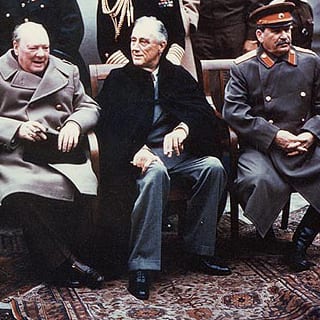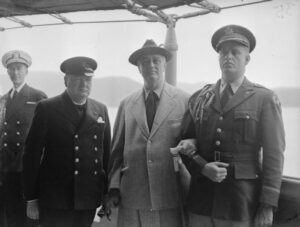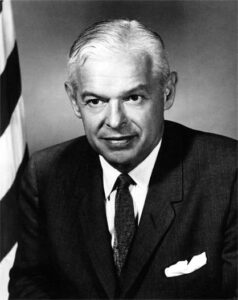
The Crimean Conference
Crimea, the sunfish-shaped peninsula on the Northern Black Sea, connected to the Ukraine at the “head”—but within a few miles of Russia at its eastern “tail”—has been in the news lately. We associate the region with the Crimean War of the mid-19th century, which occasioned Tennyson’s “Charge of the Light Brigade” and Florence Nightingale’s efforts to improve battlefield medicine. But in February of 1945, in the seaport of Yalta, it was the site of a final meeting of the three chief Allied leaders throughout most of war—Churchill, Roosevelt, and Stalin—who reached an agreement on the terms of the German surrender.
Reporting to Congress on the results of the conference on March 1, 1945, Roosevelt announced the plan for a “temporary” division of Germany into four zones, with France, Britain, the United States and Russia each administering one. He also announced what he called a “unanimous” agreement “that the political and economic problems of any area liberated from Nazi conquest, or any former Axis satellite, are a joint responsibility of all three Governments [Britain, the United States, and Russia]. They will join together during the temporary period of instability after hostilities, to help the people of any liberated area, or of any former satellite state, to solve their own problems through firmly established democratic processes.” And he looked ahead to a preliminary meeting of the United Nations in San Francisco on April 25, 1945.
Six weeks later, Roosevelt collapsed and died of a cerebral hemorrhage.



